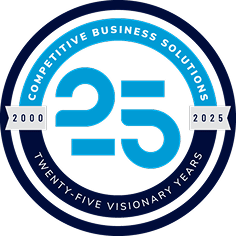
You Get What You Measure – False
When something is said enough times, it becomes a universal truth. That is the case with the phrase, “You get what you measure.” This statement is false and has created more than its share of bad will and performance issues for companies. If this were a true statement than I would be much thinner than I am. I weigh myself every morning and yet my weight continues to climb or stay the same. The correct saying is “You get what you measure when 1) you measure those things that people can affect, 2) you take corrective steps, and 3) you engage with competent people.” Maybe you are thinking that is obvious and it is just easier to say “You get what you measure.” We would contend that it isn’t so obvious and that, far too often, organizations and leaders believe if they just start measuring something, it will get better. Think about it for a minute. That mentality assumes every process and person is simply not performing because “big brother” is not watching. Isn’t that a dated mentality? Isn’t that insulting to your managers and employees? So, let’s explore the whole statement and what it really does say.
One of the roles I fulfill with CBS is to help organizations see and understand the opportunities associated with continuous improvement and the principles of Lean. Recently, I was doing just this with a prospective client and spoke to them about the impact of a visual management system. (Note: The first element in a visual measurement system is to measure performance against a goal. For more insight into a visual management system, refer to this case study.) The prospective client got really excited about the idea of measuring the output of their production cells. I left the facility with the promise to reconnect in a couple of weeks. During the follow-up call, the manager was ecstatic that output in the cell had significantly increased, and they would not be needing any additional support.
Fast forward about a month or so later and the same prospective client called to request help… So, what changed? The output had dropped back to prior levels, employee morale had dropped, and the senior leadership was not happy once again. This client had experienced what is known as the Hawthorne Effect.1 Operators and managers alike performed differently for a short sprint but were not able to sustain it. The processes were not improved but simply performing better due to the effort of the team. Which, in most cases, is not a sustainable solution.
Back to the original statement: “You get what you measure when 1) you measure those things that people can affect, 2) you take corrective steps, and 3) you engage with competent people.” In this case, they were missing a fundamental action: taking corrective measures to fix the problems that were preventing the team from sustaining the higher output. Let’s explore what we mean by each of the elements of the statement.
Selecting the appropriate metric for each work area is critical. You want to choose a metric that the associate can clearly understand and see a direct cause-and-effect relationship. “If I stay at my workstation and do my job, my output is good. If I do not, it isn’t.” On a production floor, measuring output per person or cell is typically a good metric. The team in the production area can directly impact their output as a team or as individuals. Measuring Overall Equipment Effectiveness (OEE) at the floor level, as an example, is typically a poor metric, as it is too complex for the associates to clearly see a cause-and-effect impact. Is the fluctuation in output, a change in the speed of the machine, a quality issue or associate simply having a bad day? The complexity makes taking corrective steps much more challenging.
Choosing the right metric is also important in helping with the second element of the statement: taking corrective steps. When associates can clearly see a strong cause-and-effect relationship, it helps them identify and record the true reasons for missed goals. For example, a client’s multi-station work cell constantly missed the first- and last-hour output goal. The associates would write on their tracker for the first hour “no work in the stations,” but they did not know why they weren’t able to hit the last hour. The information provided gave leadership the ability to determine the associates had to leave work in process in each cell (wetted) at the end of the shift. By instituting a countermeasure, the first- and last-hour goals began to be met.
Engage With Competent People—the piece that holds the statement together. If you do not have competent associates throughout the organization, the system will typically fail. You need leadership who can work with the associates to understand and fix the issues that are impeding the desired result. You also need associates who are willing to provide a fair effort. Without both, you will not improve performance. One of our clients at CBS encountered this situation with two identical assembly cells. In their example, one work cell was created with an appropriate metric and, after resolving a couple of issues, the cell started to perform as designed. In another cell, the same leadership resolved the issues, but the associates were not willing to put forth the effort to make it work—and the cell continues to struggle. It takes both elements working together to achieve the desired goals.
“You get what you measure when 1) you measure those things that people can affect, 2) you take corrective steps, and 3) you engage with competent people.” When all three conditions are present and working in concert, the results can be powerful. It is possible to adjust and/or train one or more of the components. If you are not seeing your desired results, consider giving CBS a call to do a quick analysis of your visual management system and see what is possible.
Latest Insights
Sign up to receive our latest insights!
"*" indicates required fields




